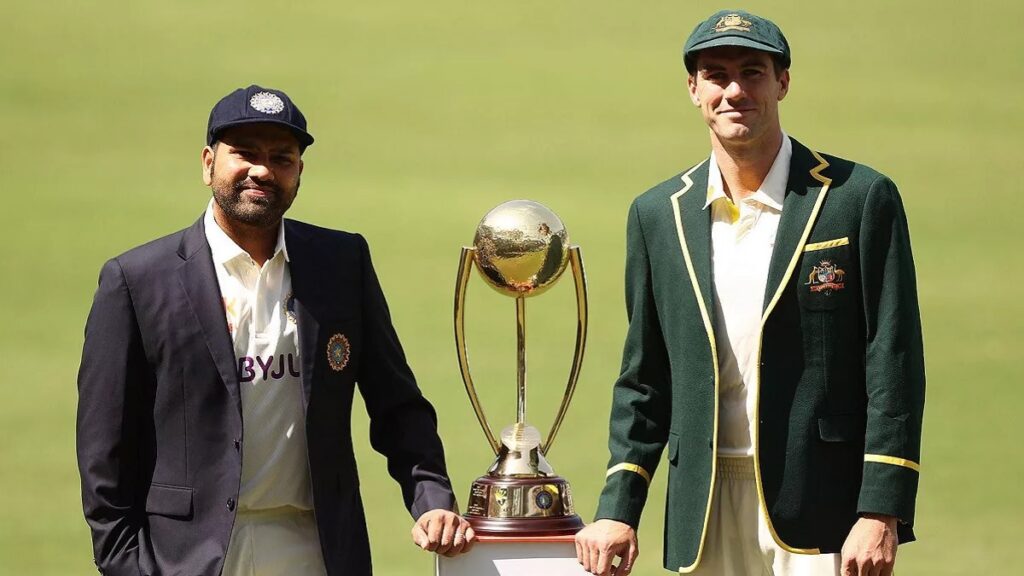
Cricket, it wouldn’t be wrong to suggest, was and is, the true national game in both India and Australia. This is precisely because it could be played against the English as part of the great imperial project. Hockey in India or Aussie Rules in Australia could not, and hence their legacies, like their origins, remain very curious in the sporting hierarchies of the two countries.
More recently, however, the India-Australia rivalry has gathered steam with Australia gradually becoming the new Pakistan for Indian cricket fans. This works well for us in India. With bilateral series against Pakistan a thing of the past as a result of the political chaos across the border, Indian fans, with their great appetite for spectacles, needed a new great adversary. Australia fit the bill perfectly. Incidents like Monkeygate in Sydney in 2008 further intensified the rivalry, and Australian aggression on the field became grist for the hate mill. Individual battles, like the one between Steve Smith and Virat Kohli for the mantle of the world’s best batsman, have helped churn sentiment, and so soon after another dramatic Border-Gavaskar Trophy, it is certain that we will witness a high-octane clash at The Oval in June.
It all started in 1947-48, when the Indians had the fortune, or rather misfortune, of facing Sir Donald Bradman, when a just-independent India toured down under. This was the first official India-Australia cricket series, an extraordinary tour of many firsts.
It was the first occasion that the Indians played official Test cricket against a side other than England, and it was the only occasion that the Indians had the opportunity of playing Bradman.
For the record, the Indians lost the series 0-4 and this rout, it can be asserted, was almost solely orchestrated by Bradman. Though 39, his powers hadn’t waned, and his scores – 185 in the first Test, 132 and 127 not out in the Third Test, 201 in the fourth, and 57 retired hurt in the fifth bear testimony to his contemptuous dominance of the Indian attack.
From the very beginning, cricket has been a vehicle for both India and Australia, from which to express national achievement and ambition. Even when bilateral relations were at a low ebb, between 1950 and 70, cricket was seen as the natural cultural bridge between the two nations. Yet, this was a rather uneasy phase in cricket relations, with Australian teams reluctant tourists to the subcontinent, and Indian teams barely supported down under because of their poor playing ability.
Also Read: India Need to be Wary of Cummins-Starc-Hazlewood Trio in WTC Final
In fact, this period of sporting tension mirrored the Australian government ignoring India. With Australia continuing to view India from an Australian/Western Cold-War perspective until the early 1970s, there was no incentive for Australian cricketers like Bradman, and then Richie Benaud and the Chappells – Ian and Greg – to view a sub-continent tour as anything special. Even when personal friendships flourished between players like Bradman and Vijay Hazare, and individual players enjoyed popularity – like Bishan Bedi in Australia, and Benaud in India – they did little to promote deeper social and political exchanges.
Matters changed substantially under Gough Whitlam, Prime Minister from 1972 to 1975. His enlightened attitude towards India, and Asia in general, helped create an Australia capable of more independent foreign-policy formulation, influenced by regional factors than the imperatives of its historically Western alliance. This was helped by Prime Minister Indira Gandhi’s enthusiastic response to Whitlam. Improved political relations impacted cricket as well, allowing Australia’s more structured economy to harness the economic worth of cricket in India.
This transformation has only been cemented since. For example, India’s tour of Australia in 2003-4 assumed tremendous significance back home, with interest stimulated by the spectacular individual performances from the Indians in the Test series.

The growing significance of Indo-Australian cricket had a perceptible impact on tourism down under as well. In the wake of India’s series in 2004, no less than 3000 Indians arrived in Australia to cheer their team, a first for Indian sport. With live television bringing the action to the comfort of Indian living rooms, Australia was suddenly an attractive tourist destination and trading partner. Thus, it is no surprise that bilateral trade between India and Australia during the calendar year in 2004 touched a record A$ 6.54 billion – a steep increase of nearly 52 per cent from the previous year.
In 2007-08, in the wake of the Monkeygate controversy, these figures witnessed a sharp rise. In fact, the 2011-12 series and the one that followed in 2013-14 witnessed 10,000-plus Indians travelling to Australia to watch the cricket. These figures, one can confidently assert, would only increase during the next tour, which comes on the back of celebrated Indian series wins in 2018 and 2021.
In fact, the Border-Gavaskar Trophy, it can be argued, is now one of modern cricket’s signature contests, and rivals the Ashes in terms of interest generated across the world.
And while the World Test Championship final is a one-off match, made special by the 75th anniversary of India-Australia cricket ties, we can expect some high-quality action at the Oval next month, adding one more chapter to an already rich history.



